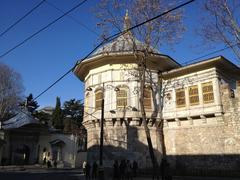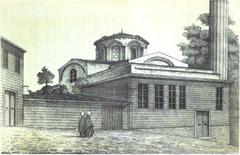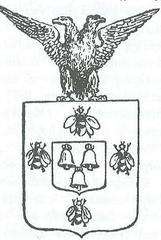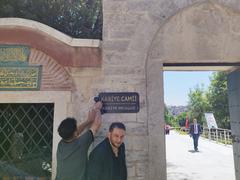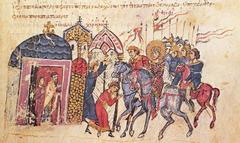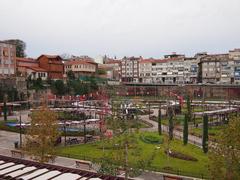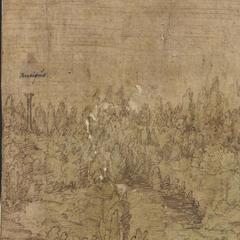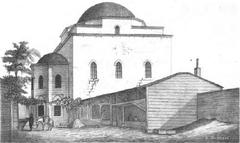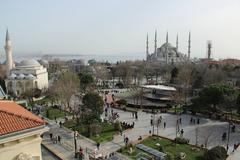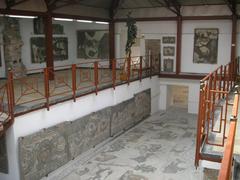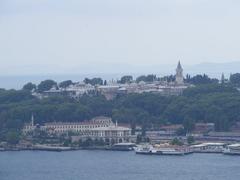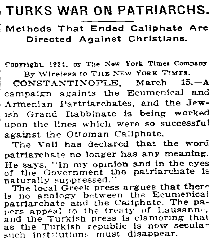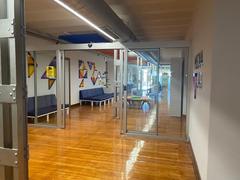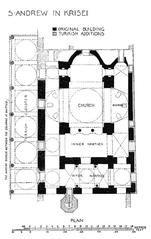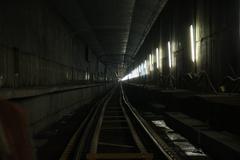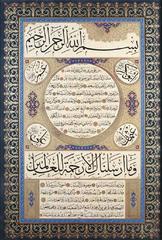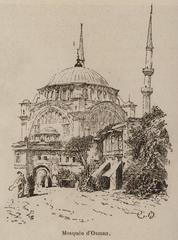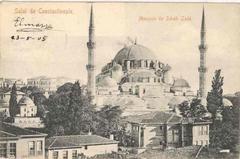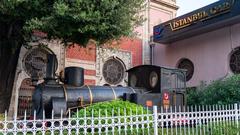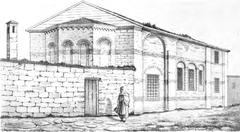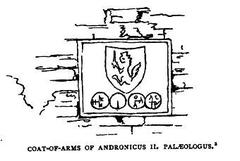Shaykh Ebu’l Vefa Mosque: Visiting Hours, Tickets, and Historical Significance in Fatih, Istanbul
Date: 04/07/2025
Introduction
Nestled in Istanbul’s storied Vefa district, the Shaykh Ebu’l Vefa Mosque (Şeyh Ebul Vefa Camii) remains an enduring symbol of Ottoman heritage and Sufi tradition. Commissioned by Sultan Mehmed II in the 15th century, the mosque was dedicated to Muslihuddin Mustafa—revered as Shaykh Ebu’l Vefa—whose spiritual influence and teachings left an indelible mark on the city’s cultural and religious landscape. Today, the mosque is not only an architectural gem but also an active center of worship and community life, surrounded by a complex that includes a medrese, a Sufi lodge, a bathhouse, and a historic cemetery adorned with unique Ottoman tombstones.
This guide provides comprehensive insights into the mosque’s history, architectural highlights, spiritual significance, as well as practical information for visitors: hours, ticketing, accessibility, etiquette, and nearby attractions. Whether you are a history buff, a cultural explorer, or a spiritual seeker, the Shaykh Ebu’l Vefa Mosque promises a profound and memorable experience (tr.wikipedia.org; kulturenvanteri.com; islamask.com; en.wikipedia.org; osmanlicaogren.com).
Historical Overview
Foundation and Early History
Built soon after the Ottoman capture of Constantinople, the Shaykh Ebu’l Vefa Mosque was established to honor Muslihuddin Mustafa—Shaykh Ebu’l Vefa—whose Sufi teachings deeply influenced the city’s spiritual life. Originally from Konya (with some sources citing Hoy, Azerbaijan), Shaykh Ebu’l Vefa became a prominent Islamic scholar and Sufi leader, guiding communities in both religious and secular sciences after settling in Istanbul (islamask.com).
Architectural Evolution
The mosque’s original 15th-century design features a lead-covered central dome, a single minaret, and a rectangular prayer hall—hallmarks of early Ottoman architecture (tr.wikipedia.org). Over time, the complex expanded to include a medrese, a hamam, and the Shaykh’s tomb (türbe), with significant restorations in the 18th century. A distinctive wall with twelve openings and an inscribed gate (dated 1767 CE) reflect both functional and artistic changes made over centuries (kulturenvanteri.com).
The Shaykh Ebu’l Vefa Complex and Cemetery
The mosque complex is enveloped on three sides by an historic cemetery (hazire), which contains about 450 Ottoman tombs. Noteworthy are the gravestones carved with motifs indicating causes of death, such as plagues, and rare Zeyniyye order markers. The türbe of Shaykh Ebu’l Vefa, adorned with a Persian inscription, remains a site of pilgrimage and reverence (kulturenvanteri.com).
Life and Legacy of Shaykh Ebu’l Vefa
Shaykh Ebu’l Vefa’s life was marked by deep scholarship, resilience, and Sufi devotion. After studying with prominent Sufi masters, he was captured by pirates on his return from Hajj, later ransomed and brought to Istanbul, where he established his dergah. His teachings emphasized humility, faithfulness (“vefa”), and the pursuit of knowledge. The following couplet, inscribed on his tomb, reflects his spiritual stature:
“Muslihuddin Ebu’l Vefa, the guide of the people of meaning,
The soil of his grave is the kohl for the eyes of lovers.”
(islamask.com)
Visiting Information
Opening Hours
- General Visiting Hours: Daily, from 8:00 or 9:00 AM to 5:00 or 6:00 PM (varies slightly by season and prayer times).
- Worship Priority: Visitors should avoid entering during the five daily prayers, especially Friday noon.
- Special Events: Hours may change during Ramadan or religious holidays.
Tickets and Admission
- Entry: Free of charge, as is tradition for functioning mosques in Istanbul. Donations for upkeep are welcomed.
Dress Code and Etiquette
- Dress Modestly: Men should wear long pants and sleeved shirts; women are expected to wear long skirts or pants, sleeved tops, and a headscarf.
- Shoes: Remove before entering the prayer hall; use provided shelves.
- Behavior: Remain quiet, silence phones, and avoid eating or drinking inside.
- Photography: Permitted outside prayer times; avoid photographing worshippers.
Accessibility and Facilities
- Mobility: The mosque is mostly accessible; ramps are available, but some historic areas have uneven surfaces.
- Restrooms: Facilities are available; small cash fee may apply.
- Guided Tours: Can be arranged via local tour operators or by contacting mosque staff.
Getting There
- Public Transport: Easily accessible via Vezneciler metro, Laleli-Üniversite tram, or several bus routes to the Vefa neighborhood.
- Walking: Pleasant pedestrian access through historic streets lined with Ottoman-era buildings.
Architectural and Artistic Highlights
- Exterior: Simple Ottoman stonework, single minaret, and a tranquil courtyard with a restored ablution fountain (şadırvan).
- Interior: Central dome with pendentives, marble mihrab, carved wooden minbar, Iznik tile accents, arched stained-glass windows, and Quranic calligraphy.
- Tomb: The türbe of Shaykh Ebu’l Vefa is a focal point for reflection and spiritual visitors.
- Cemetery: Tombstones feature calligraphic inscriptions, symbolic motifs, and unique markers for epidemic victims (kulturenvanteri.com; osmanlicaogren.com).
The Vefa District: Historical Context and Nearby Attractions
The Vefa district, named for Shaykh Ebu’l Vefa, is rich in Byzantine and Ottoman monuments, including the Aqueduct of Valens, Kalenderhane Mosque, Vefa Kilise Mosque, Atif Efendi Library, and the famed Vefa Bozacısı (boza shop). Strolling through the neighborhood, visitors encounter authentic cafés and traditional shops that capture the district’s vibrant heritage (en.wikipedia.org).
Frequently Asked Questions (FAQ)
Q: What are the mosque’s visiting hours?
A: Daily from 8:00 or 9:00 AM to 5:00–6:00 PM; closed to visitors during prayer times.
Q: Is there an entrance fee?
A: No, entry is free; donations are appreciated.
Q: What should I wear?
A: Modest, non-revealing clothing; women should cover hair with a headscarf.
Q: Are guided tours available?
A: Yes, through local operators or mosque staff.
Q: Is the mosque accessible to visitors with mobility challenges?
A: Largely accessible, though some areas may require assistance due to historic features.
Q: Can I take photos?
A: Yes, but avoid photographing worshippers and during prayers.
Tips for a Meaningful Visit
- Plan your visit outside prayer times and Friday noon prayers.
- Bring a headscarf (for women) and wear socks.
- Explore the cemetery for Ottoman funerary art and unique inscriptions.
- Engage with local staff or volunteers for deeper insights.
- Combine your visit with nearby landmarks like the Aqueduct of Valens or Vefa Bozacısı.
Responsible Tourism and Community Engagement
The mosque is a living place of worship and community. Be respectful of religious practices, especially during Ramadan and Islamic holidays. Greet staff with a polite “Merhaba,” and feel free to ask questions about the mosque’s history or Islamic customs.
Summary
The Shaykh Ebu’l Vefa Mosque offers a multifaceted experience: architectural elegance, spiritual depth, and living community traditions. Its origins under Sultan Mehmed II and its association with a revered Sufi master make it a cornerstone of Istanbul’s Ottoman and religious heritage. Accessible to visitors and worshippers alike, the mosque and its surrounding Vefa district provide rich opportunities for historical exploration and cultural immersion.
To enhance your visit, consider engaging with guided tours and utilizing resources like the Audiala app for insightful audio guides and up-to-date information. Embrace both the mosque’s serene atmosphere and the Vefa neighborhood’s vibrant streets for a truly meaningful Istanbul experience.
Sources and Further Reading
- Şeyh Ebul Vefa Camii – Wikipedia (tr)
- Şeyh Ebul Vefa Camii Haziresi – Kültür Envanteri
- Kimdir: Şeyh Ebul Vefa – Islam Ask
- Vefa – Wikipedia (en)
- Şeyh Ebul Vefa Camii ve Kitabeleri – Osmanlıca Öğren
Image suggestions: Include high-quality photos of the mosque’s exterior, interior dome, calligraphic panels, türbe, cemetery, and nearby landmarks. Use descriptive alt tags such as “Exterior view of Shaykh Ebu’l Vefa Mosque in Istanbul” and “Ottoman calligraphy inside Shaykh Ebu’l Vefa Mosque.” Interactive maps of the Vefa district and virtual tour links can further aid visitors.
